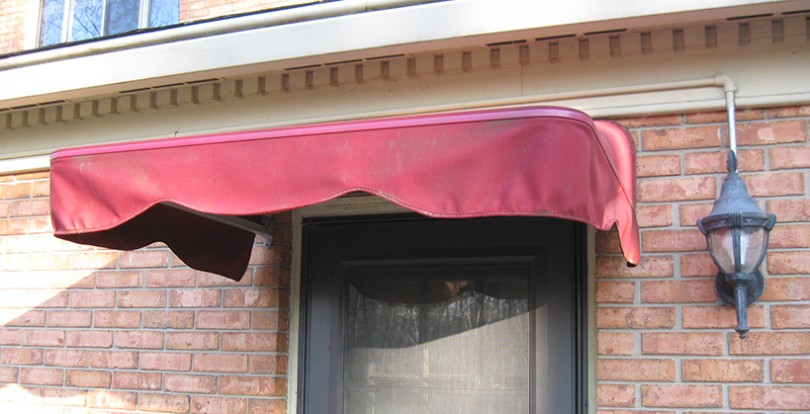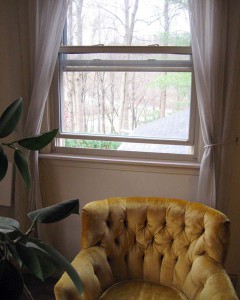By James Dulley
There are quite a few free, low-cost improvements and simple lifestyle changes you can make to reduce the amount of air-conditioning needed on hot summer days. However, it’s important to keep in mind that initially your family will likely be a bit less comfortable but should become accustomed to the changes quickly.
The simplest method to run the air-conditioner less is to set your thermostat a few degrees higher. The savings should be from 1 to 3 percent for each degree you raise it. This lessens the amount of outdoor heat that transfers into your home, which your air conditioner has to remove.
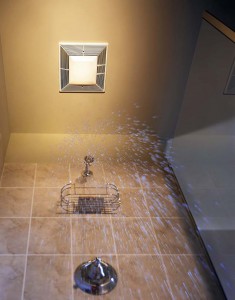
Run bathroom and kitchen vent fans to reduce the amount of moisture and humidity level inside the house.
There is a limit to how high you can raise your thermostat without becoming too uncomfortable – and instigating a rebellion by your family. Other methods to minimize air-conditioning are to reduce the amount of heat that leaks into your home, reduce the amount of heat generated inside your house, control humidity levels, increase indoor air movement and use natural ventilation when possible.
Avoid sitting near a sun-exposed wall or window during sunny afternoons. Wall insulation is effective for blocking conductive heat gain, but not for radiant heat. When the outside wall gets hot in the sun, particularly a brick or masonry wall, the radiant heat comes right through the wall to your skin. It can make you feel a couple degrees warmer than the actual room air temperature. Window and door awnings can be helpful in blocking direct sunlight.
Most energy efficiency improvements, such as caulking, weather stripping and insulation, are made to reduce heat loss during winter. They also reduce heat gain during summer. Check the insulation in your attic to make sure there are no voids or thin areas where it may have loosened or blown around and ensure all attic vents are not blocked by the insulation.
A great deal of heat is generated inside a home from cooking, bathing and running electric appliances, causing the air conditioner to work harder to remove the additional heat. When cooking or bathing, run the range hood or bath exhaust fan to remove the extra heat and moisture.
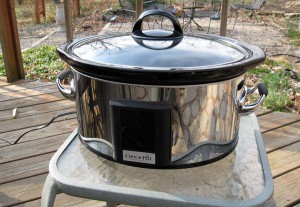
Use countertop cooking appliances outdoors during the summer to reduce the heat energy created inside the home.
During the summer, use countertop-cooking appliances, such as a slow cooker, in the garage or outdoors to reduce indoor heat and humidity generation. Remember to unplug phone and computer chargers and other electrical items when they are not being used. Even though each device uses a small amount of electricity, they generate heat, which can add up quickly.
Wash dishes and clothes at night instead of the afternoons during peak heat. The heat given off from the hot water and electricity used by the motors will stress your air conditioner less at night. Washing at night also reduces the peak electricity demand for your utility provider.
Keeping air moving inside your home increases evaporative cooling from your skin to keep you comfortable at a higher indoor temperature. Running a ceiling paddle fan is very effective for this. Keep in mind the electric motor in the fan actually heats the room air, so turn it off when the room is unoccupied.
Set the ceiling fan on medium to high speed and the rotation switch so it blows the air downward. During winter, change the switch setting so the air blows upward and set it on slower speed.
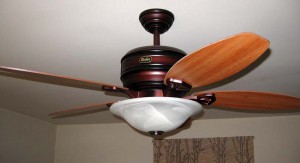
This ceiling paddle fan creates a comfortable breeze. It also includes heating elements and a thermostat for winter heating.
On a breezy, not excessively hot day, try opening some windows. Widely open several windows on the downwind side of your home and slightly open windows on the windward side. Due to the pressure difference, this causes the air to blow in the partially opened windows much faster, creating a breeze in that room using no electricity.
Another option for staying cool is building a solar chimney, which uses the sun’s heat to ventilate your house for free. This is a tall wooden chimney with two clear sides from the ceiling to above the roof. When the sun shines into the clear sides, it heats the air. Since hot air rises, it naturally exhausts air from your house. This works well when using natural ventilation on a still day. Block the ceiling opening with an insulated panel when air-conditioning or heating.
A whole-house ventilation fan, often located in a hall ceiling, can draw huge amounts of air through your house. Run the fan at night to cool down the entire house and delay the time in the morning when the air conditioner has to come back on.

